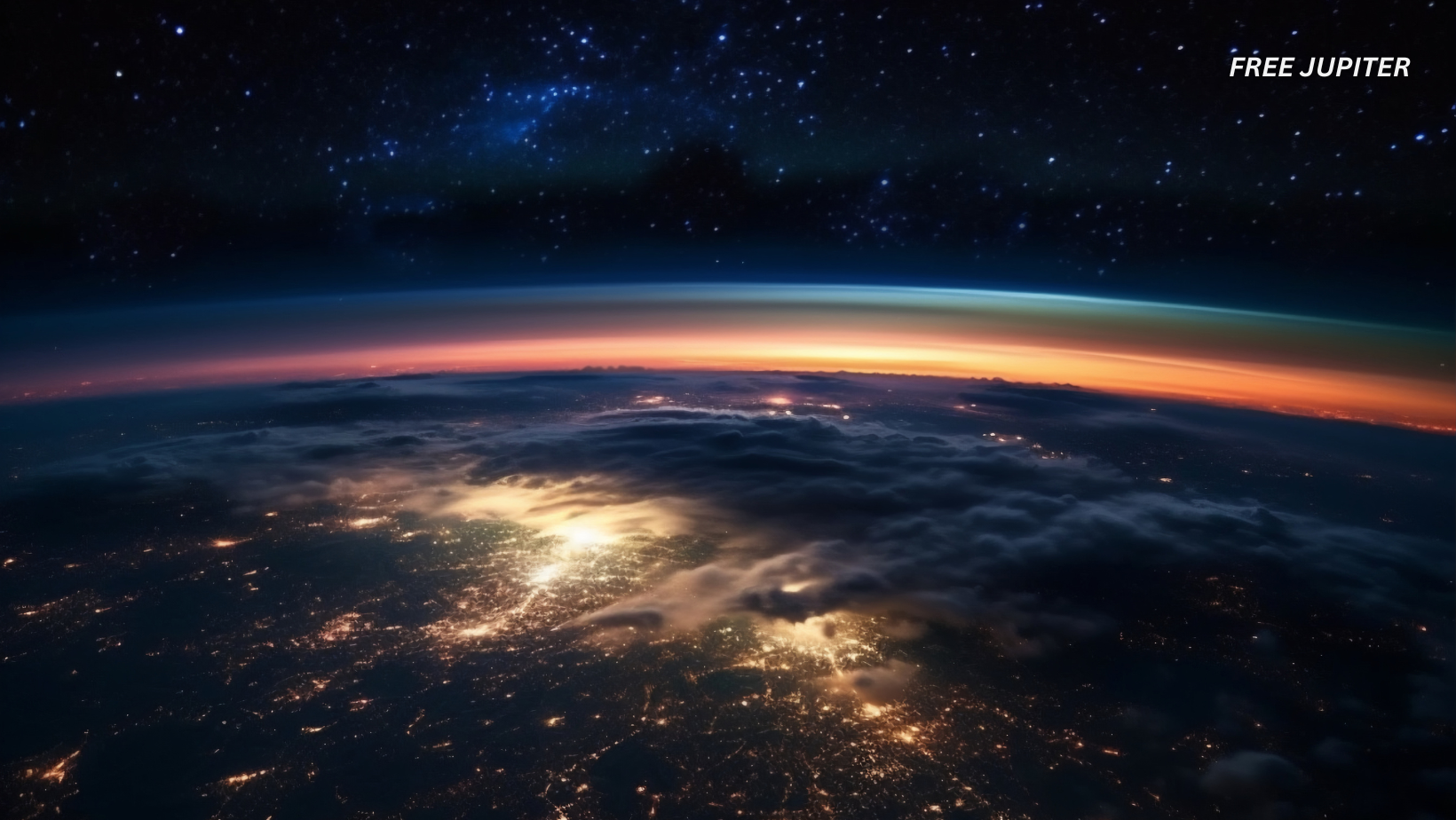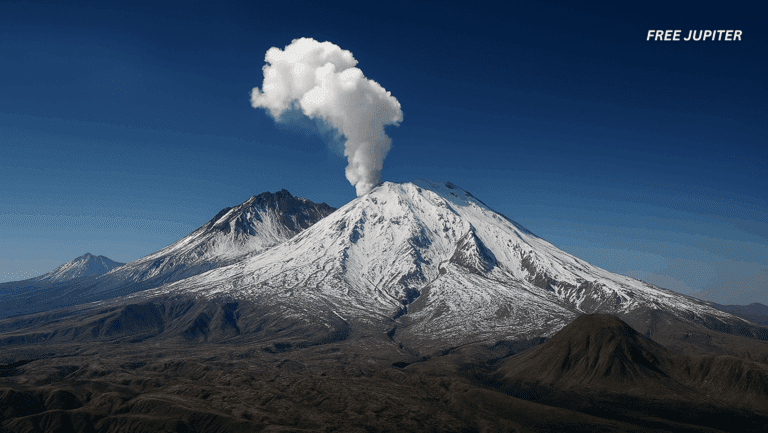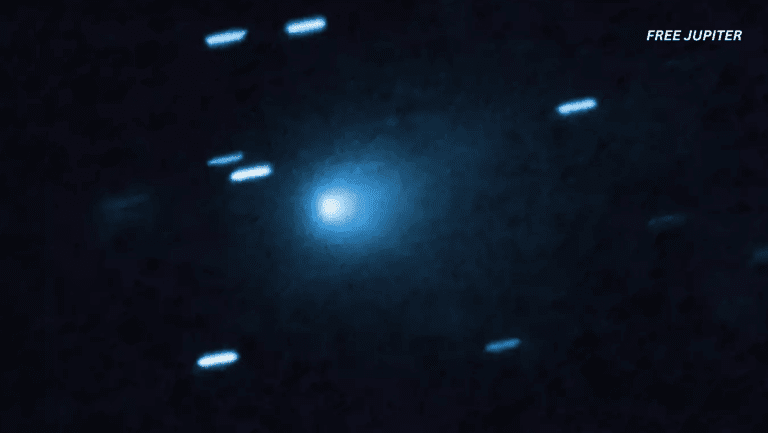Friendly Note: FreeJupiter.com shares general info for curious minds 🌟 Please fact-check all claims—and always check health matters with a professional 💙
In recent years, astronomers have been grappling with a cosmic conundrum that challenges our fundamental understanding of the universe’s growth. The James Webb Space Telescope (JWST), working in tandem with the venerable Hubble Space Telescope, has now confirmed a puzzling discrepancy in how fast the universe is expanding – a phenomenon known as the “Hubble Tension.” This persistent inconsistency has profound implications, suggesting that our current models of cosmology may be incomplete or even flawed.
The Expanding Universe and the Hubble Constant
The universe has been expanding since the Big Bang, roughly 13.8 billion years ago. This expansion is quantified by the Hubble constant, a number that describes how quickly galaxies are moving away from each other as space itself stretches. Determining this constant with precision is crucial because it informs us about the age, size, and fate of the cosmos.
However, astronomers have encountered a perplexing problem: two of the most reliable methods for measuring the Hubble constant yield conflicting results. This discrepancy is not trivial-it amounts to about an 8 percent difference in the expansion rate, which is significant given the precision of modern instruments.
Two Methods, Two Different Answers
The first method involves studying the cosmic microwave background (CMB), the faint afterglow radiation left over from the Big Bang. This ancient light offers a snapshot of the universe when it was just 380,000 years old. Using data from the European Space Agency’s Planck satellite, scientists have inferred an expansion rate of approximately 67 kilometers per second per megaparsec (km/s/Mpc). This means that for every 3.26 million light-years of distance, galaxies appear to recede at 67 kilometers per second.
Read more: See the Sun Fire Off a 600,000-Mile-Long Eruption in Spectacular New Footage
The second method relies on observing Cepheid variable stars, a type of pulsating star whose brightness varies in a predictable pattern. By measuring the intrinsic brightness of these stars and comparing it to how bright they appear from Earth, astronomers can accurately determine their distance. This “cosmic distance ladder” allows scientists to measure distances to faraway galaxies and calculate the universe’s expansion rate based on how much the light from these stars has been stretched, or redshifted. Using this method, led by Nobel laureate Adam Riess and his team, the expansion rate is measured at about 74 km/s/Mpc-noticeably faster than the CMB-based estimate.
James Webb’s Crucial Confirmation
For years, some scientists speculated that the higher expansion rate derived from Cepheid stars might be due to measurement errors, such as the blending of Cepheids with other stars in crowded fields, which could artificially inflate brightness readings. The Hubble Space Telescope’s resolution, while excellent, might not have been sufficient to fully resolve these potential issues.
Enter the James Webb Space Telescope. Launched in 2021, JWST boasts a 6.5-meter primary mirror coated in gold, offering unprecedented infrared sensitivity and resolution. This allows it to peer deeper into space and distinguish stars in crowded regions with greater clarity than ever before.
In 2023, JWST observations cross-checked the Cepheid measurements made by Hubble. The results were striking: JWST confirmed that the previous measurements were accurate and that the discrepancy was not due to observational errors. By observing over 1,000 Cepheid stars in five host galaxies up to 130 million light-years away, JWST reinforced the higher expansion rate estimate.
Read more: Real-Life Alchemy: Scientists Accidentally Turn Lead Into Gold While Recreating the Big Bang
The Hubble Tension Persists
With both Hubble and Webb telescopes independently confirming the faster expansion rate, the possibility of measurement error as the cause of the discrepancy has been effectively ruled out. This leaves cosmologists with a genuine mystery: why does the universe appear to be expanding faster now than predicted by observations of its early state?
Adam Riess, who shared the 2011 Nobel Prize in Physics for discovering the universe’s accelerating expansion, emphasized the significance of this finding. “With measurement errors negated, what remains is the real and exciting possibility that we have misunderstood the universe,” he said.
Possible Explanations: New Physics on the Horizon?
The persistence of the Hubble Tension suggests that the standard cosmological model-the framework that has successfully explained much about the universe’s evolution – may be missing key components. Two mysterious cosmic ingredients, dark matter and dark energy, make up about 96 percent of the universe’s content, yet remain poorly understood.
One hypothesis is that unknown properties or interactions involving dark energy or dark matter could be influencing the expansion rate in ways not accounted for by current theories. Alternatively, there might be new physics at play, such as modifications to the laws of gravity or the existence of previously undiscovered particles.
David Gross, a Nobel laureate in physics, has described the situation as a “crisis” in cosmology, underscoring the urgency of resolving this puzzle.
The Cosmic Distance Ladder and Its Importance
The cosmic distance ladder is a series of methods astronomers use to measure distances to celestial objects, each rung calibrated by different standard candles or markers. Cepheid variables form one of the foundational rungs, crucial for measuring distances within our cosmic neighborhood.
By confirming the reliability of Cepheid measurements with JWST, astronomers have strengthened the base of this ladder. This, in turn, solidifies the higher expansion rate derived from local universe observations, making the discrepancy with early universe measurements even more puzzling.
What’s Next for Cosmology?
The combined capabilities of JWST and Hubble have provided the most precise measurements of cosmic expansion to date, but the quest to understand the Hubble Tension is far from over. Future observations will explore other distance indicators, such as Type Ia supernovae, quasars, and gravitational wave signals, to further refine expansion rate measurements.
Upcoming missions, including the European Space Agency’s Euclid telescope and NASA’s Nancy Grace Roman Space Telescope, will complement JWST’s findings by mapping the distribution of dark matter and dark energy with unprecedented detail.
Read more: Scientists May Have Found a Hidden Energy Source That Could Power Earth for 170,000 Years
A Window into the Universe’s Secrets
The confirmation of the Hubble Tension by JWST represents both a challenge and an opportunity. It challenges the completeness of our cosmological understanding and invites scientists to explore new theories and models. At the same time, it opens a window to potentially revolutionary discoveries about the universe’s composition and fate.
As Adam Riess noted, this is a moment to take the mystery seriously and embrace the chance to deepen our knowledge of the cosmos. The universe, it seems, still holds many secrets waiting to be uncovered.










